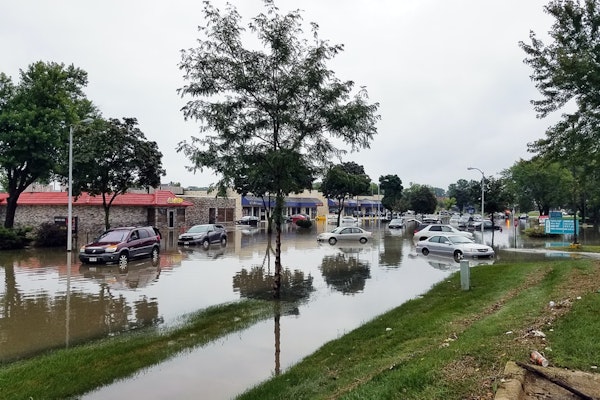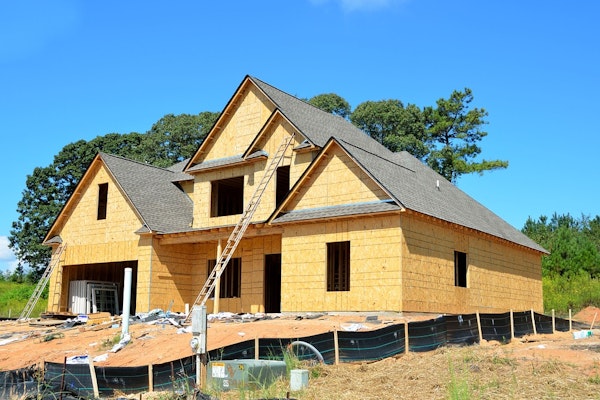
Flood Protection Gap Reaches $255B as Insurers Rethink Risk Models
A growing flood protection gap is driving insurers and large businesses toward parametric coverage and captive risk structures as legacy models fall short.
January 8
Catastrophe
Insurance Industry
Property
Risk Management
Technology

How Insurers and Property Owners Are Using Data to Address Deferred Maintenance Risks
As deferred maintenance costs climb, insurers are partnering with technology providers to help policyholders reduce losses before claims occur.
January 8
Insurance Industry
Property
Risk Management
Technology

How Hyperscale Data Centers Are Changing Property Risk for Insurers
Hyperscale facilities tied to AI and cloud computing are testing property insurance capacity, pricing and underwriting discipline. Brokers face major valuation and business income hurdles.
January 5
Excess & Surplus Lines
Property
Risk Management
Technology
Underwriting

How Fire and Water Shape Mass Timber Claims and Construction
Fire and water remain the leading drivers of insurance claims in mass timber construction. Stakeholders must align risk management, training, and policy innovation to ensure safe project outcomes and insurability.
January 5
Education & Training
Insurance Industry
Property
Risk Management
Technology

P/C Industry Nets $34.9B Underwriting Gain as Cat Losses Ease in 2025
AM Best reports a sharp recovery in P/C insurer profitability for 2025, helped by lower catastrophe losses and improved reserve development.
December 29, 2025
Auto
Catastrophe
Insurance Industry
Liability
Property

California Wildfires, Premium Hikes, and the New Economics of Homeowners Insurance
Catastrophe losses, inflation, and construction costs are squeezing insurers and driving up homeowner premiums—putting more pressure on claims professionals.
December 29, 2025
Catastrophe
Insurance Industry
Legislation & Regulation
Property
Risk Management

Cyber, Casualty, and Climate Shape 2026 Reinsurance Dynamics
Reinsurance capacity surged in 2025 amid historic low catastrophe losses, driving down rates and changing the risk-sharing landscape. Adjusters can expect shifts in how insurers deploy capital, respond to claims, and design coverages—especially in casualty, cyber, and catastrophe-exposed regions.
December 29, 2025
Catastrophe
Excess & Surplus Lines
Insurance Industry
Legislation & Regulation
Liability

Ford Recalls 272,000+ Vehicles for Rollaway Risk Tied to Faulty Park Module
Faulty park module in F-150 Lightning, Mustang Mach-E, and Maverick hybrids poses serious rollaway danger. Software fix planned despite hardware flaw.
December 22, 2025
Auto
Liability
Litigation
Risk Management
Subrogation

AI Exclusions in Insurance Spark Coverage Uncertainty Beyond Cyber Policies
AI-related policy exclusions are showing up in D&O and E&O lines, raising red flags for adjusters assessing risk and coverage clarity.
December 22, 2025
Legislation & Regulation
Risk Management
Technology

How Elastic Staffing Helps Insurers Handle Claim Surges and CAT Events
Carriers are rethinking claims and underwriting operations to meet volatile demand and rising costs. Elastic Staffing blends core leadership with vendor and tech support to create scalable, efficient teams.
December 22, 2025
Catastrophe
Insurance Industry
Risk Management
Technology
Underwriting

Google Sues Darcula Cybercrime Group Over Massive Scam Text Campaign Targeting Americans
The lawsuit aims to seize phishing infrastructure blamed for millions of fraudulent texts and widespread financial losses affecting U.S. consumers and insurers.
December 18, 2025
Fraud
Legislation & Regulation
Technology

AI Transforms Insurance Decision-Making with Generative Tech and Intelligent Workflows
Insurers are leveraging generative AI to streamline workflows, ensure regulatory compliance, and enhance customer outcomes. The shift from prediction to real-time decision support is reshaping the industry.
December 18, 2025
Insurance Industry
Legislation & Regulation
Risk Management
Technology

Essential Communication Skills for Insurance Claims Professionals
Customer service and communication are top-rated skills in insurance. Learn how claims teams can build and leverage these strengths to deliver better outcomes and deeper policyholder trust.
December 18, 2025
Education & Training
Insurance Industry
Risk Management
Technology

Employers Shift Benefits Strategy to Cut Costs and Manage GLP-1 Drug Coverage
Cost containment takes priority over talent attraction as employers battle rising healthcare costs and embrace transparency and digital health tools.
December 15, 2025
Insurance Industry
Life & Health
Risk Management
Technology
Workers' Compensation

Stadium Construction Surge Challenges Insurers With Complex Mega-Project Risks
Massive stadium builds are creating unprecedented risk complexity, from cyber threats and labor shortages to environmental land use issues.
December 15, 2025
Insurance Industry
Liability
Property
Risk Management
Technology





